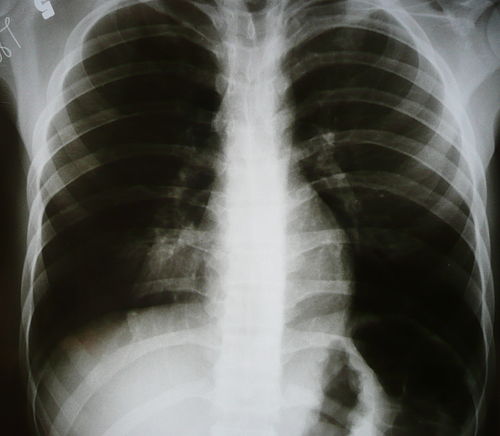In emergency situations involving children, it’s tempting for doctors to do everything possible to get information, especially when anxious parents are at hand. Unfortunately, that can mean a lot of unnecessary imaging and radiation exposure, and sometimes fruitless exploratory surgery.
This has spurred a search for biomarkers that can reliably make or rule out a diagnosis, as in appendicitis, and the creation of decision rules about the need for imaging, as in minor head trauma and blunt abdominal trauma, based on physical examination and limited testing, and validated by a large volume of clinical experience.
Emergency physicians Mark Neuman and Rich Bachur at Children’s Hospital Boston have been looking to reduce the use of chest X-rays in children with suspected pneumonia, where chest X-ray is usually considered the diagnostic testing modality of choice. Studying records from patients diagnosed with pneumonia at 25 pediatric emergency departments, they found that the proportion that had received a chest X-ray varied widely among hospitals — from 38 percent to 88 percent. Use of chest X-rays was similarly variable for patients with upper respiratory tract infection (9 to 36 percent), wheeze (14 to 56 percent) and fever (7 to 41 percent). Neuman and Bachur surmised that some clinicians may use X-ray to confirm a suspected pneumonia diagnosis, whereas others may use it to screen patients for their source of fever or cough.
Yet even as they’re referring children for chest X-rays, physicians have a good handle on the likelihood of pneumonia. In a prospective study of more than 2,000 patients who had a chest X-ray performed for suspicion of pneumonia, Neuman and Bachur found that while there was some over-estimation, physicians were able to accurately identify children at both low and high risk of radiographic pneumonia.
So that begs the question: Could some children skip the chest X-ray? According to NewChoiceHealth.com, a chest X-ray typically costs about $200 -$400 or more, with an average of $370. More importantly, exposing children’s immature tissues to radiation potentially increases their risk for cancer.
In their most recent study in the Children’s ED, published last week, Neuman, Bachur and their colleague Michael Monuteaux showed that the presence or absence of specific clinical findings can help to determine risk of pneumonia. Patients with history of chest pain, lung crackles, fever lasting more than 3 days and reduced blood oxygen levels (particularly an oxygen saturation of 92 percent or lower) — were significant predictors of pneumonia documented by chest X-ray. They also define a population at children at low risk of pneumonia. “For the low risk patient, careful clinical follow-up should be considered as an alternative to obtaining a radiograph,” they conclude.
Sometimes less can be more in medicine. In the developing world, where pneumonia is a leading cause of death in children, and where medical resources are limited, antibiotics are given based on clinical evaluation alone. The World Health Organization’s guidelines for assessing children at risk for pneumonia are based primarily upon the presence of cough and rapid respiratory rate. Bachur, Neuman and emergency physician Sarah Wingerter are now taking a closer look at the WHO guidelines, particularly at different cut-offs for respiratory rate, to see if they can improve the clinical diagnosis of pneumonia in developing countries, too.
Neuman MI, Graham D, & Bachur R (2011). Variation in the use of chest radiography for pneumonia in pediatric emergency departments. Pediatric Emergency Care, 27 (7), 606-10 PMID: 21712748
Neuman MI, Scully KJ, Kim D, Shah S, & Bachur RG (2010). Physician assessment of the likelihood of pneumonia in a pediatric emergency department. Pediatric Emergency Care, 26 (11), 817-22 PMID: 20944506
Neuman MI, Monuteaux MC, Scully KJ, & Bachur RG (2011). Prediction of Pneumonia in a Pediatric Emergency Department. Pediatrics PMID: 21746723







